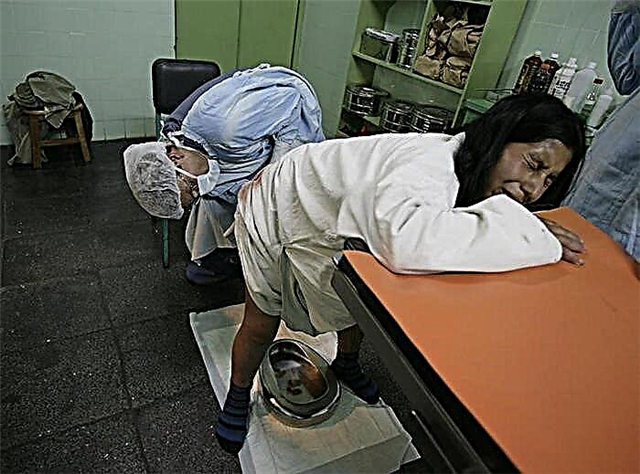
If the expectant mother has symptoms of threatened abortion, then most often she will be prescribed one of the hormonal medications that maintain progesterone levels. The most popular drugs with such an effect are Dyufaston and Utrozhestan. They are in demand in the early stages, as well as in case of problems with conception. These drugs have similar healing effects, but there are also many differences.
How are drugs similar?
Both medicines are designed to replenish the level of progesterone in the body of a pregnant woman, if for some reason it has decreased. This hormone is very important for carrying a baby, as it prepares the mucous membrane for implantation and helps the embryo attach to the wall of the uterus, reducing the tone of the muscle membrane. With its lack, hypertonicity may occur and bleeding may open, which will lead to an abortion in the early stages. If you appoint "Duphaston" or "Utrozhestan" in time, then dangerous symptoms can be eliminated, which will allow you to successfully carry the baby.
The drugs are safe for the fetus and can be used at any stage of pregnancy. In addition, both medications can be prescribed before conception if low progesterone levels prevent a woman from getting pregnant.
Both Dufaston and Utrozhestan are also used during the IVF protocol to increase the chances of a successful embryo transfer. The withdrawal tactics are also common to both drugs - they are stopped gradually and carefully, monitoring the condition of the expectant mother.

Differences
Composition
The key difference between the drugs is their active substance. In Utrozhestan it is micronized progesterone at a dose of 100 or 200 mg, and in Duphaston - its synthetic analogue, called dydrogesterone, at a dose of 10 mg. The effect of progesterone is considered stronger, but dydrogesterone lacks androgenic activity, and such a substance is absorbed better.
The auxiliary components of drugs are also different. Utrozhestan contains glycerin, soy lecithin, titanium dioxide, sunflower oil and gelatin, and the inactive ingredients of Dufaston are lactose, magnesium stearate, silicon dioxide, corn starch, opadry shell and hypromellose.

Release form
"Duphaston" is presented in the form of tablets, which have a white shell and a round shape. They have beveled edges and a risk in the middle, are packed in blisters of 14 or 20 pieces and are sold in cardboard boxes of 20, 28, 84 and 112 tablets. The drug is a prescription drug and costs about 500-600 rubles per pack of 20 tablets.
The dosage form "Utrozhestan" is yellowish shiny capsules, inside of which there is a homogeneous oily liquid of white color. The lower dosage capsules are round, packed in blisters of 14 and sold in a pack of 2 blisters. The form of capsules with a higher dosage is oval, one blister contains 7 such capsules, and one pack contains 14 pieces. The average price of one box of "Utrozhestan" is 400 rubles. Like Duphaston, this drug is also available with a prescription.


Mode of application
Tablets "Duphaston" are swallowed and washed down with water. If required, the drug is broken into halves or even quarters. Usually, such grinding is necessary when the drug is canceled, because it is impossible to sharply reduce the dose of the hormone. The reception scheme is selected individually. Some women need to drink the medication twice a day, others - 3 times a day. The duration of treatment also varies for different patients, but most often the drug is stopped from 16–20 obstetric weeks, when progesterone begins to be produced by the placenta.
"Utrozhestan" can also be taken orally, swallowing in the evening, and sometimes in the morning. It is usually recommended to take the drug at 200 mg at night and, if necessary, at 100 mg in the morning. However, the instructions also mention the second method of use - the introduction of the capsule deep into the vagina of a pregnant woman.
The medication is prescribed both in the first trimester and at a later date, if it is required to prevent premature birth.

Contraindications
The reason to refuse to use "Duphaston" may be hypersensitivity or impaired liver function. In addition, the tablets are contraindicated for women with problems in the absorption of carbohydrates, because they include milk sugar. But the list of contraindications to the appointment of "Utrozhestan" is much larger. In addition to hypersensitivity and severe liver pathologies, it includes:
- thrombophlebitis, thromboembolism and thrombosis;
- porphyria;
- malignant tumors of the genitals or breasts;
- vaginal bleeding, the cause of which has not yet been identified.
In addition, the instructions for the capsules also include a fairly large list of diseases in which the medicine is prescribed with increased caution, for example, arterial hypertension, bronchial asthma, depression, diabetes mellitus and epilepsy.

Side effects
During treatment with Dufaston, various side symptoms may appear, among which are common:
- headaches;
- increased breast sensitivity;
- nausea.
In some women, taking the pills provoked an allergic skin reaction, vomiting, dizziness, and weight gain. Occasionally, the medication became the cause of liver dysfunctions, hemolytic anemia, Quincke's edema, drowsiness, and edema. However, judging by the reviews, the majority of patients tolerate Duphaston normally.
As for the side effects of "Utrozhestan", such capsules often provoke bloating and headaches. In addition, oral administration is often accompanied by drowsiness, diarrhea, dizziness, and vomiting. To eliminate such negative reactions, the doctor either reduces the dosage or recommends that the drug be administered vaginally.
Among other side effects that occur during treatment with Utrozhestan, women call an allergic reaction, insomnia, pain in the joints, sweating at night, changes in libido and body weight, an increase in body temperature and blood pressure. Intravaginal use of capsules can provoke burning, itching, redness of the mucous membrane, oily discharge.


Is it used simultaneously?
In some cases, the doctor may prescribe "Duphaston" together with "Utrozhestan", for example, if a significant lack of progesterone is detected or there are problems with tolerance. However, the combination of these medicines is possible only on the prescription of a specialist who will determine the appropriateness and select the correct dosages for each of the medicines.
For example, the morning use of "Duphaston" will eliminate the negative effect of micronized progesterone on a woman during the day, and the use of "Utrozhestan" at night will provide an additional sedative effect.
Is it possible to replace one drug with another?
Since both drugs act in a similar way and are prescribed for the same pathologies, they can be replaced with each other if necessary, for example, if a woman has severe side effects.
At the same time, the transition to another drug, for example, the replacement of "Duphaston" with "Utrozhestan", is carried out only under the supervision of a doctor, who will tell you the procedure for canceling one drug and increasing the dosage of the second. But in most cases, you can switch to another medication quickly enough - in 1-2 days.

See the doctor's comments on the drug "Utrozhestan" in the following video.



